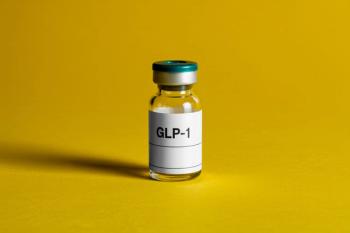
Cognitive Impairment: Improved PET Scans Show Plaques and Tangles
Positron emission tomography (PET) of the brain using an enhanced chemical marker has the ability to differentiate among normal aging, mild cognitive impairment, and Alzheimer disease (AD). Researchers writing in the New England Journal of Medicine said the technique is "potentially useful as a noninvasive method to determine regional cerebral patterns of plaques and tangles associated with Alzheimer's disease."
Positron emission tomography(PET) of the brain using an enhancedchemical marker has theability to differentiate among normalaging, mild cognitive impairment, andAlzheimer disease (AD). Researcherswriting in the New England Journal ofMedicine said the technique is "potentiallyuseful as a noninvasive method todetermine regional cerebral patterns ofplaques and tangles associated withAlzheimer's disease."1
Eighty-three volunteers with selfreportedmemory problems participatedin the study. On the basis of cognitivetesting, they were divided according totheir degree of cognitive impairment.Twenty-five volunteers were classifiedas having AD and 28 as having mildcognitive impairment, while the remaining30 were healthy controls withno impairment.
Previous studies have found that α-amyloid (in senile plaques) and tau (inneurofibrillary tangles) "accumulate abnormallyin a predictable spatial patternduring aging and Alzheimer's disease,"the researchers wrote. The investigatorsused a tracing agent known as FDDNP,a molecule they developed that binds tothe amyloid senile plaques and tau neurofibrillarytangles. They compared theresults to outcomes with a different tracerknown as FDG and to MRI studies ofthe same patient group.
"Global values for FDDNP-PETbinding . . . were [significantly] lower inthe control group than in the group withmild cognitive impairment . . . and thevalues for binding in the group withmild cognitive impairment were [significantly]lower than in the group with Alzheimer's disease," they wrote."FDDNP-PET binding differentiatedamong the diagnostic groups better thandid metabolism on FDG-PET or volumeon MRI."
In comparing the 3 diagnostic methods,the researchers wrote: "We foundthat the values of global FDDNP weremore accurate than previously establishedsensitive measures for FDG-PETor volumetric MRI measures for diagnosticclassification of subjects, suggestingthat FDDNP may be useful indifferentiating among Alzheimer's disease,mild cognitive impairment, andnormal aging."
One of the 83 subjects died 14months after the baseline studies werecompleted. A neuropathological examinationfollowing an autopsy "showedthat regions of the brain with high valuesof FDDNP binding are characterizedby high concentrations of plaquesand tangles. These findings support thepotential usefulness of FDDNP-PET inthe development of surrogate markersfor drug discovery aimed at blockingamyloid buildup and as a diagnostictool, although the study does not providedefinitive evidence of a basis forsuch uses."
The researchers concluded that,"FDDNP-PET scans differentiate personswith mild cognitive impairmentfrom those with Alzheimer's diseaseand those without cognitive impairment.Equally important, in vivo distributionsof FDDNP in the brain followpatterns of pathological distributionseen at autopsy. . . . These observationssuggest that FDDNP-PET may be usefulin the development of surrogatemarkers for monitoring the accumulation of these abnormal protein aggregatesin the brain that are characteristicof Alzheimer's disease."
Gary W. Small, MD, professor ofpsychiatry and biobehavioral sciencesand director of the University of California,Los Angeles (UCLA) Center onAging, headed the team that conductedthe research. He and his associates havebeen investigating the use of PET scansin the diagnosis of AD and related conditionsfor 6 years.
"Our intention has been to identify atechnology that would help us get ameasure of plaques and tangles in livingpeople," he told Psychiatric Times."Whether they cause it or not, they docorrelate with the cognitive decline. Forthat reason, we thought it would be usefulto have that technology.
"We came up with the approach ofusing PET scans, which UCLA patentedand licensed to Siemens Medical. It'sall been done with NIH funds, not privatecompanies'."
For this phase of their research,Small said, "We screened a number ofpeople with mild to more severe memorycomplaints. We tried to only include3 groups of subjects: people with AD,people with mild cognitive impairment,and people with normal age-relatedmild memory complaints. All of thesubjects were classified without brainscans (except for an MRI showing evidenceof a stroke or a tumor). We gavethem all a new PET scan and then did amore conventional PET scan. We usedthe MRI scans to draw the regions of interestand to look at regional atrophy.
"The scans did a pretty good job ofclassifying the clinical diagnosis. Thenew scan did the best."
Small believes the diagnostic toolshis team has developed will pave theway for better management of AD and accumularelatedconditions.
"The question of how valuable thesefindings are has always been raised, especiallywhen we started doing this research,"Small said. "We'd say we canfind brain abnormalities years beforepeople have AD and the critics wouldrespond with 'why bother?'That's whatis always on people's minds. They don'twant to do tests or procedures unless wecan do something with the informationthey provide.
Potential for early treatment
"Now we are at the point of developingnew treatments to prevent the build-upof plaques and tangles, and we've got atool to monitor the effectiveness ofthese kinds of treatments.
"Today, being able to obtain a betterdiagnosis of AD is useful," he added."We already do have symptomatic treatmentsright now. A good diagnostic testwould enable us to find out accurately ifthose treatments are indicated, whichwould save money in the long run becausepeople who don't have AD won'tbe getting the medications they don'tneed."
In addition to the therapeutic advancesthat could derive from a morefocused diagnostic tool, Small says thework of his team has already influencedpublic policy. "The data obtained in theFDG-PET studies we've done over theyears helped to change Medicare policy.In September 2004, after severalyears of presenting data to the Centersfor Medicare and Medicaid Services,they changed the guidelines for reimbursement.Now Medicare will pay fora PET scan to rule out AD. We're hopingthat this new development will leadto further changes. Siemens is proceedingwith additional studies, and we'rehelping them move forward on that. Inthe next couple of years, this technologyshould be available to clinicians.We're also working with companiesthat have compounds that they are testingfor potential disease-modifying effectson AD."
Newsletter
Receive trusted psychiatric news, expert analysis, and clinical insights — subscribe today to support your practice and your patients.














